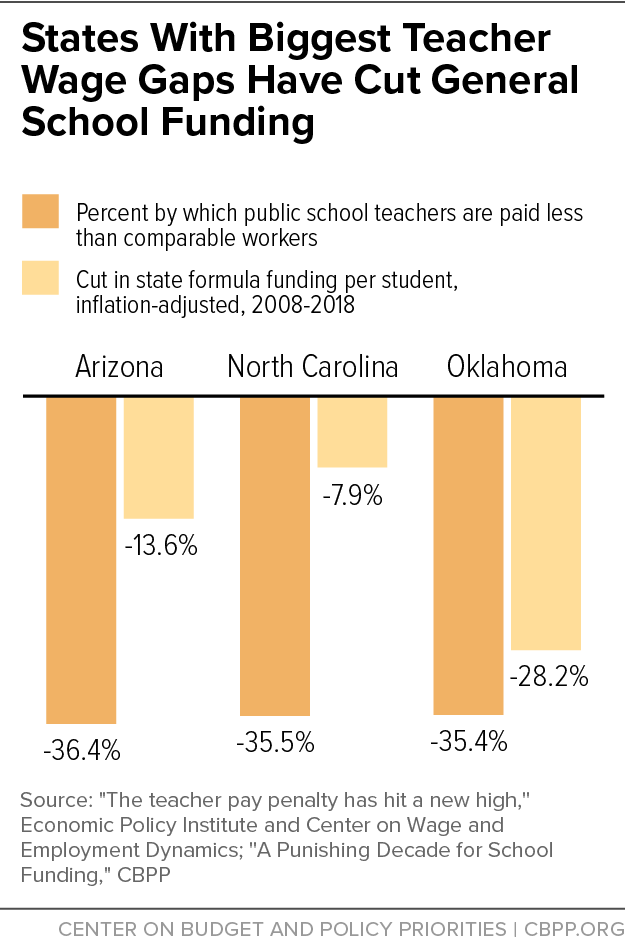BEYOND THE NUMBERS
Teachers in every state are paid less on average than other similarly educated workers, according to a new report by the Economic Policy Institute (EPI) and the University of California, Berkeley’s Center on Wage and Employment Dynamics (CWED), and the gap is growing. This erosion reflects state policy choices, not weak state economies. As our analysis of K-12 funding trends shows, the three states where teachers fare the worst — Arizona, North Carolina, and Oklahoma — have deeply cut taxes in recent years and imposed some of the biggest cuts in general school funding since 2008 (see chart).
The EPI-CWED report finds that nationally, the teacher wage gap — the percent by which public school teachers are paid less than comparable workers — hit a record 18.7 percent in 2017. The gap is slightly smaller (15.6 percent) for women but much larger (26.8 percent) for men, reflecting the fact that men have historically had more job options due to gender discrimination. While teachers enjoy more generous benefits than other professionals, this doesn’t make up for the gap in wages. And benefits, though important, can’t be spent on housing, food, and other necessities.
Arizona and Oklahoma teachers both secured pay increases this spring after major teacher protests, but both states need more revenues to sustainably fund the promised increases and reverse past cuts:
- In Arizona, the current budget includes a 20 percent increase for teachers over three years but doesn’t include enough new revenue to pay for it, relying instead on optimistic predictions of economic growth, continued cuts in the Medicaid rolls, and one-time funding shifts. And the new revenue sources the budget does include, like a new car-registration fee, would disproportionately burden low- and middle-income families.
- Oklahoma lawmakers raised $530 million in new revenue this spring to fund K-12 education, the first time the state had raised any taxes in more than 25 years. But this was still less than the new spending lawmakers approved to support teachers and classrooms. And the new funding for school operations makes up less than one-third of the funding cut since 2008, even before accounting for higher enrollment and costs.
In North Carolina, where deep income tax cuts have failed to produce the promised economic boom, led to serious fiscal instability, and worsened racial wealth disparities, lawmakers have refused to even halt another round of tax cuts slated to take effect next year. General school aid per student last school year remained 7.9 percent below a decade ago, after adjusting for inflation.
An overwhelming majority of Americans believe that teachers are paid too little, as poll after poll after poll shows. Increasing teacher pay and adequately investing in public schools — and raising the revenue needed to do so — should be a top priority for state lawmakers across the country.

